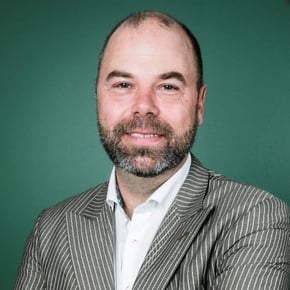In 2021 and onwards battles for innovation and customer experience will be hard fought. The victor will be the organizations that open full throttle and effort to focus on competitive advantage. It will require a leadership suited for speed and, most importantly, clear purpose.
Looking at the organizations that are beating the curve, there seem to be certain keys as to why they are successful. The pattern is that successful organizations are removing some of the traditional energy thieves and friction areas to minimize energy loss. Here are a few observations that are worth highlighting:
1. Making Technology a natural and continuous part of the management team agenda
Connecting the true business drivers and targets to a few key digital advancements. Make sure to have regular cadence in following up development and changes of these in executive meetings. Having a CIO with a regular spot in these meetings will make understanding and prioritization harmonized and create a common vision that will trickle down to every movement. The top performers realize they are becoming a tech business and have a natural seat for a CIO at the table.
The modern CIO is no longer only about the IT. It is a person who can help you understand how tech can create leverage. The modern CIO is a person that can translate and breakdown what success looks like for a management team and translate this to a navigable course the technology agenda. This will be the foundation for leading your technology agenda with purpose. If you do not find room for your current CIO at this level, you as CEO should be asking why.
2. The prioritized digital advancements are your digital products
The work does not stop when a project is done. Let’s dig into that for a minute. A business or an organization needs to, once and for all, rally around a terminology that is relatable to everyone. The product-concept is simple and understandable and will change the way we regard development and investment within in the management team. A product is developed with a product lifecycle perspective and because of its weight in the competitive landscape it is constantly reviewed and upgraded.
Successful companies continuously improve a product and set up natural cross functional teams to enhance it with a customer experience perspective. This is a foundation of the classic “lean” approach. It is today a foundation in agile methodology. The agile, cross-functional teams take responsibility not only of development of the product or service but also for making sure it is operational and fit. The important take-away is that the work cannot be limited to a project. The work starts with the decision to build a product and ends when the product is retired. Think lifecycle from day one.
3. Speed and mandate
Neither bottom up nor top-down budget processes can accommodate for the speed and prioritization required for a product mindset or agile. A key to success is trust. The cross-functional teams that are allowed full mandate to prioritize enhancement will have more success in enhancing customer experience.
The traditional yearly process will slow down productivity that is connected to value. The funding and control will have to leave project mindset and embrace the lifecycle perspective. That should span anywhere from 3 to 6 years.
Management must be willing to accept certain risk and place larger bets on winning in the long term and trusting the team with the task. Identifying and rallying around the digital products will be the foundation for speed.
4. You cannot be partially agile
If you decide to embrace the agility and continuous improvement operating model, you need to make sure it is not implemented partially. It must encompass the full value chain leveraging the digital product. Remove friction by aligning people, funding and objectives in agile streams. It is still possible, and likely necessary, to run bi-modally but the more traditional “Services” will have to be clearly separated.
Once you do implement an agile model such as SAFe for the products or services that need speed, make a point of implementing the methodology both in the business and in all areas involved. If you only implement from an IT or only from a business perspective, there will be friction. There will be unalignment. The agile operating model of a successful digital product organization is and must be a decision as well as a responsibility of the management team. It needs orchestration.
5. The governance model will be a complex multi leader matrix
The complexity of agile governance will naturally introduce quite a few changes to what people are used to. There will be multiple leaders with, at times, conflicting interests in advancing the paths to success. This will have to be managed. The objectives and responsibilities will have to be defined and adjusted when needed to balance the new model. The changes are unnatural for some and perfectly logical for others.
One of the most critical focus areas in implementing Digital Products and agile governance is the readiness of the people involved. The teams must be prepared for the complexity of a matrix organization. There will be more than one reporting path. This can be a benefit and can add balance to a professional role if done right. Dissolving traditional reporting structures and adding others force every individual to recalibrate the daily objectives, hopefully from pleasing the sole manager into the things that create value to the big picture.
Conclusion
As advisors, one of our conclusions is that leadership is far more key to winning in 2021 than the concept of Digitalization itself. One will fuel the other. A transformation program need attention to leadership and culture. The 2021 operating models need speed and purpose. The models require delegated mandates and responsibilities. Confident leadership is the foundation to success. Organizations poised to success will thrive if individuals are expected to make decisions for the greater good. The formula involves trust and nurturing an environment where decision and actions are rewarded.
Our collective experience in guiding and implementing tech strategy, operating models and change has rendered an holistic approach and framework that we call Assent. The Assent framework gravitates around a handshake (An Assent) of business and IT professionals focusing on the mutual assignment of customer experience.
Do you want to know more about Assent?


